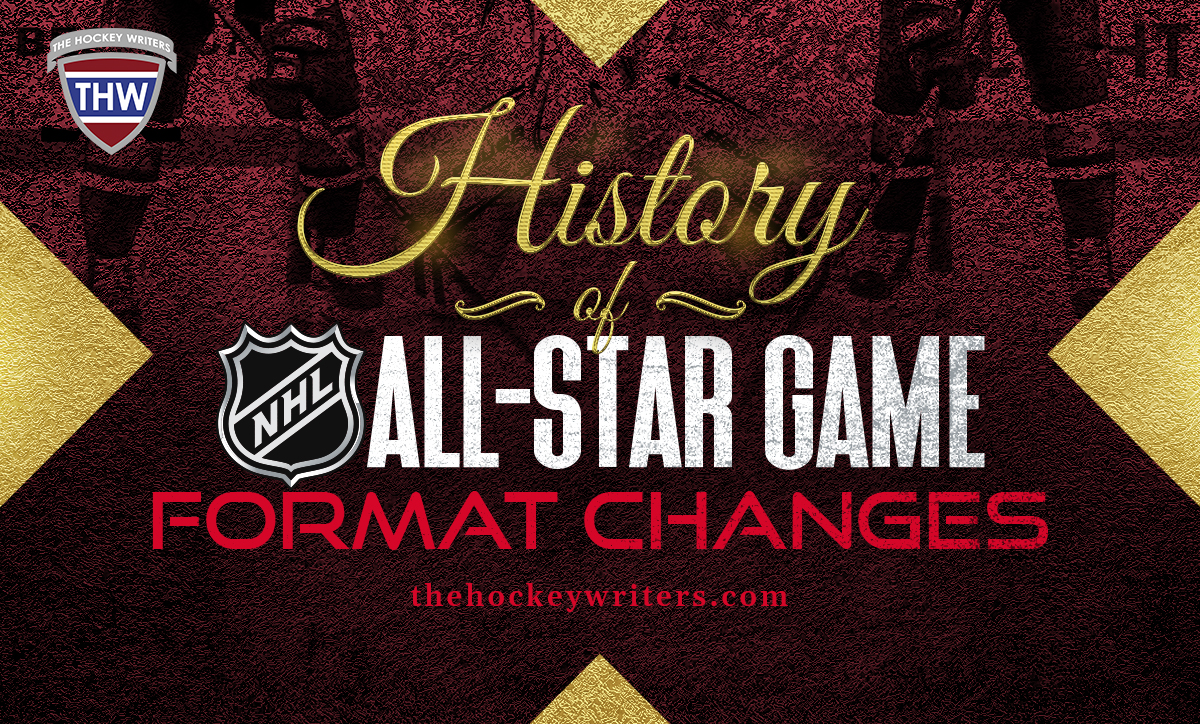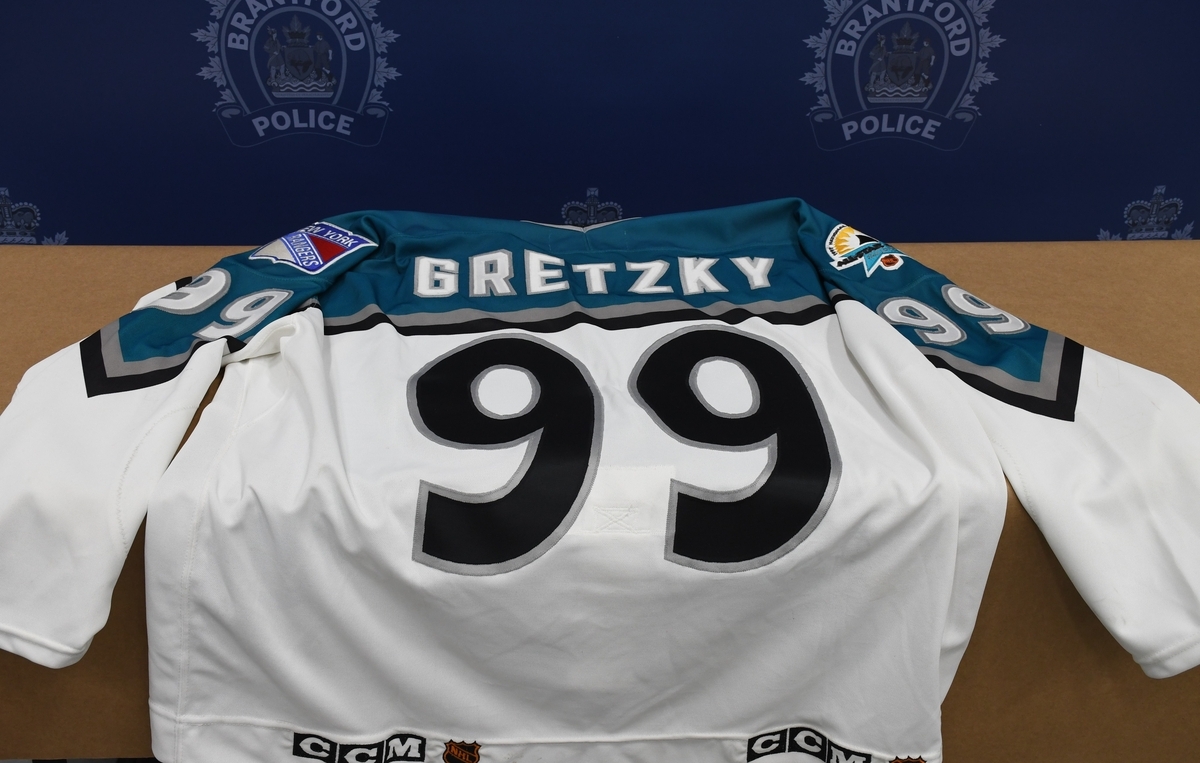*This was originally published in Feb. 2022
The 66th NHL All-Star Game took place in Las Vegas, Nevada on Saturday, Feb. 5, 2022. The league hoped that the return of the event for the first time since the pause of March 2020 would bring positive exposure and substantial revenue. The game itself, the NHL All-Star Skills Competition, and the entirety of the festivities throughout All-Star Weekend are intended to grow the game and attract new audiences, especially children, to become hockey fans.
The NHL All-Star Game began as a way to raise money for families of former NHL players, and it became an annual event in 1947. Throughout the history of the league, the format of the All-Star showcase has undergone significant changes on multiple occasions.
Stanley Cup Winners vs. NHL All-Stars
The first official NHL All-Star Game format began just before the 1947-48 season during the era of the Original Six. The Toronto Maple Leafs, the defending Stanley Cup champions, took on a collection of All-Stars made up of the best players from the league’s five other teams. Toronto lost 4-3 on Oct. 13, 1947. They won the next two Stanley Cups but lost to the NHL All-Star team again ahead of the 1948-49 and 1949-50 seasons.

The defending champion Detroit Red Wings blew out the NHL All-Stars 7-1 in October 1950, prompting the NHL to change its format in 1951 and 1952 to feature the First Team All-Stars against the Second Team All-Stars from the previous season. The idea was short-lived, and the NHL returned to the format featuring the Stanley Cup champion to open the season against the best players on the five remaining teams.
The NHL All-Star Game switched to a midseason format during the 1966-67 season. The Maple Leafs became the last Stanley Cup champion to face the NHL All-Stars midseason in January 1968 after the 1967 expansion that doubled the size of the league to 12 teams.
Conference/Division Format: East vs. West, Campbell vs. Wales
Expansion prompted a best-on-best All-Star format between the Original Six teams in the East Division and the expansion teams in the West Division. The early Cup winners of the expansion era all came out of the East, and they handled the West Division All-Stars with three wins and a tie in the first five All-Star Games in the division format through the 1972-73 season.
The NHL realigned into the Campbell Conference and the Wales Conference ahead of the 1974-75 season. The eastern teams in the Patrick and Adams Divisions made up the Wales Conference, while the western teams in the Norris and Smythe Divisions made up the Campbell Conference. The Wales Conference won 12 of 17 All-Star games until the NHL changed the names to the Eastern and Western Conference in 1993.

Gordie’s Howe’s 23rd and final NHL All-Star Game came in 1980 as a member of the Wales All-Star team. The game was appropriately held at Joe Louis Arena in Detroit, where “Mr. Hockey” spent 25 seasons with the Red Wings. Wayne Gretzky, who holds the record for most goals and points in All-Star Game history, had perhaps the best of his 18 performances in 1983 when he scored four goals in the third period to help the Campbell Conference All-Stars to the win.
Former San Jose Sharks forward Owen Nolan made the best memory of the short era of East-West All-Star Games in the 1990s when he “called his shot” before burying his third goal to complete a hat trick against Dominik Hasek in 1997.
“Rendez-vous ’87”
“Rendez-vous ’87” featured a team of NHL All-Stars in a two-game series against the Soviet Union national team. The exciting change of pace replaced the All-Star Game in February 1987. The NHL was still made up mostly of Canadian players at this point in time, and the international clash was a measure of the progress of hockey on the world stage. Raymond Bourque and Mark Messier joined up with Gretzky and Mario Lemieux against the legendary Soviets of the 1980s, and the two teams split the short series.
Related: 2022 Guide to the Men’s Olympic Tournament
NHL players were, unfortunately, unable to participate in the 2022 Winter Olympics in Beijing, leaving hockey fans all over the world starving for the best-on-best international competition. The World Cup of Hockey might return in the near future, but the league should consider rematerializing the Rendez-vous novelty idea and creating an international showcase in place of the All-Star Game. Would the television ratings justify handling the long list of obstacles in their planning efforts?
North America vs. The World
The excitement surrounding the participation of NHL players in the Nagano Winter Olympics in 1998 inspired the league to switch its All-Star Game format yet again. They pitted players from the North American countries against players from the rest of the nations of the world with the hope of benefitting from fan interest in international competition.
The new format also intended to showcase different styles of play that grew from different parts of the world. The first North American All-Star team featured bruisers like Scott Stevens, Keith Tkachuk, and Eric Lindros while crafty finesse players like Peter Forsberg, Teemu Selanne, and Pavel Bure led the World All-Star team. There were major outliers to the supposed contrast on both teams, but the idea was more prevalent in 1998 when some players from distant parts of the world weren’t as reputable in NHL circles as they are in 2022. The format lasted for five years.
In Vancouver in 1998, Selanne helped out the narrative of the growth of the international game with a hat trick in a losing effort. He became the first European player in All-Star Game history to take the MVP honors. Gretzky appropriately won the MVP in his final All-Star Game in 1999. Lemieux stole the publicity two years later in his first All-Star Game since returning to the NHL from a three-year retirement, but Bill Guerin upstaged the Pittsburgh Penguins legend with a hat trick in a thrilling 14-12 victory for North America.
The NHL returned to the Eastern Conference vs. Western Conference format for the 2003, 2004, 2007, 2008, and 2009 All-Star Games. They did not hold the event in 2005 because of the player lockout or during the 2006 and 2010 seasons because of player participation in the Winter Olympics.
Team Captains- Schoolyard Style
The NHL mixed up their format once again for the 2011 All-Star Game and allowed captains to choose the teams with alternating picks without any limitations based on conference or national origin. The idea sounded intriguing in theory because it was reminiscent of kids picking sides in schoolyard games.
Players voted for Nicklas Lidstrom and Eric Staal as captains in 2011, Zdeno Chara and Daniel Alfredsson in 2012, and Jonathan Toews and Nick Foligno in 2015. Another lockout wiped out the 2013 game, and Olympic participation eliminated the game in 2014. The league might’ve been better off choosing more marketable superstars as the captains, especially during the prime years of Sidney Crosby and Alexander Ovechkin as the two most recognizable players in the league. The television ratings plummeted during the era of the captain format.
3-on-3 Tournament Style
The NHL introduced its current format of a 3-on-3 tournament between the Atlantic, Metropolitan, Central, and Pacific Division All-Star teams in 2016. The most memorable instance in the current format occurred ahead of the 2016 contest when a bizarre situation involving a gimmicky fan vote put enforcer John Scott in the running to earn a selection.
Scott honorably held true to his beliefs, passed through a whirlwind of drama before the event, and competed in the All-Star Game in Nashville, Tennessee. The league was concerned that Scott’s participation would ruin any legitimacy the event still had after the television ratings had slipped in seasons prior, but they ended up with an incredible feel-good story when the 6-foot-8 journeyman scored two goals and took home the MVP award.
Colorado Avalanche center Nathan MacKinnon recently criticized the rule that every team must send one player. His gripes have a legitimate basis, especially concerning potential contract incentives. A shift away from the fixation on the selection process for the midseason All-Star Game and toward the All-Star teams named after the regular season could significantly correct problems with the current format.
NHL All-Star Game Perception
The game has historically been criticized for the lack of competitive spirit between the players, but fans should keep the league’s goals in perspective when analyzing the event. It’s about marketing and revenue above all else, but it’s also about an authentic element of attracting new fans to the game of hockey using the biggest stars with no fear of losing their competitive advantage for the season. When hard-core hockey fans roll their eyes after seeing world-class talent play at less than a world-class level, they should also remember how they felt the first time they watched the NHL All-Star Game and how the next generation of hard-core hockey fans might look back nostalgically on the 3-on-3 tournament of 2022 someday.
